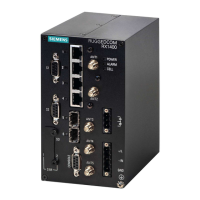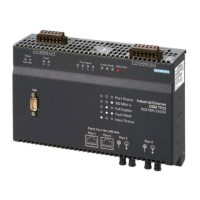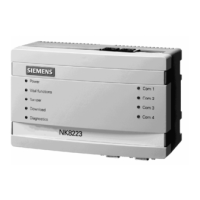Chapter 13
Unicast and Multicast Routing
RUGGEDCOM ROX II
CLI User Guide
596 Enabling/Disabling a PIM-SM Interface
ge-sm-1 false
switch.0001 true
group-prefix
PREFIX
--------------
225.0.0.1/32
225.0.0.2/32
!
If no PIM-SM interfaces have been configured, enable interfaces as needed. For more information about enabling
PIM-SM interfaces, refer to Section13.14.7.2, “Enabling/Disabling a PIM-SM Interface”.
Section13.14.7.2
Enabling/Disabling a PIM-SM Interface
To enable or disable a PIM-SM interface, do the following:
NOTE
Enabling PIM-SM on an interface also enables IGMPv2 on the interface, wherein the interface with the
lowest IP address becomes the IGMP querier and sends periodic query messages every 125 seconds.
1. Make sure the CLI is in Configuration mode.
2. The interface is passive by default. Make it active for PIM-SM by typing:
no interface ifname passive
Where:
• ifname is the name of the interface
• passive determines whether the interface is passive (default) or active (no passive)
NOTE
A maximum of 30 non-passive interfaces can be active for PIM-SM.
3. Make sure the chosen interface is assigned an IP address. For more information, refer to Section7.1,
“Managing IP Addresses for Routable Interfaces”.
4. For VLAN interfaces only, if IGMP snooping is enabled on the interface, make sure the IGMP query interval is
set to 125 seconds. For more information, refer to Section8.4.3.1, “Configuring IGMP Snooping”.
The same is required for any Layer 2 switches on the network.
5. Type commit and press Enter to save the changes, or type revert and press Enter to abort.
Section13.14.8
Managing Static RP Addresses
A commonly used method for locating Rendezvous Points (RPs) is to target them directly by IP address, as opposed
to locating them dynamically. Use static IP addresses when there are only a small number of RPs on the network

